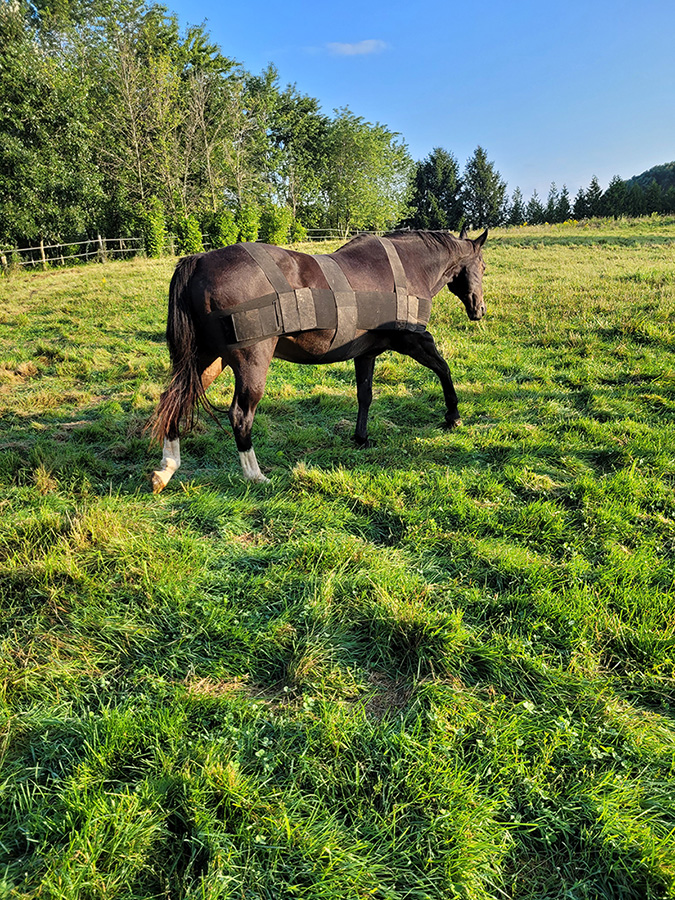INDEPENDENCE DAY CELEBRATION SALE – NOW THROUGH JULY 13, $40 OFF ANY PROSIX EQUINE! USE JULY40 AT CHECKOUT.
Movement of tissue is a fundamental aspect of life and affects everything from circulation to digestion to metabolism to immunity. Through movement, a body can optimize daily function by regulating hormone activity, detoxifying and improving respiration. When tissues move, neural pathways are stimulated which boosts the body’s healing capacity and ability to ward off disease.
The musculoskeletal system is particularly reliant on movement, as receptors in the muscles and joints provide vitally needed information to the brain. When joints are motioning freely, muscles expand and contract. The lymphatic system relies on the contraction and expansion of our skeletal muscles to circulate, so it can pump toxins out of our bodies.
With injury, disuse or overuse, movement integrity of tissue is compromised, and joints become immobile, which influences neural integrity. Information from the body through sensory fibers stimulate the Central Nervous System, and the Central Nervous System through motor fibers, stimulate the body. What the brain communicates to the body depends on the information the body has imparted to the brain. This is an indissoluble union.
Joint immobility can cause inflammatory biochemistry, and can lead to biomechanical stress, cellular damage, decreased delivery of oxygen and nutrients and can stimulate pain receptors.
Dr. Roger Sperry, nobel laureate demonstrated that 90% of the energy entering the brain is from the spine. In other words, 90% of the stimulation and nutrition to the brain is generated by movement of the spine!
Movement is of prime importance to our neurologic evolution and survival. The nervous system is receptor driven. Receptors are neural structures that convert the pictures of the environment into an electrical message the brain can interpret and understand. Receptors respond to mechanical pressure or distortion! In other words….touch! Every time a muscle is used or stretched, receptors tell the brain about it.
The ‘Gate Control Theory’ establishes that the spinal cord contains a neurological ‘gate’ that either allows or blocks pain signals to pass on to the brain. The experience of pain depends in part on whether the pain gets past a neurological ‘gate’ in the spinal cord. With injury or immobility, pain receptors transmit a pain signal and ‘open the gate’ to alert us to a problem.
Mechanoreceptors are receptors that are activated by ‘physical deformation of tissue’ (touch). They are faster and larger than pain receptors, and when activated, transmit information to close the gate to pain. Immobility results in decreased firing of mechanoreceptive receptors and increased firing of pain receptors. The mechanical intervention of movement or touch activates mechanoreceptors, which inhibits pain signals by blocking the synaptic gates and suppressing the signals of pain. It is precisely for this very reason that we will instinctively touch a painful area!
The most efficient way to treat joint immobility is to change the sensory input to the nervous system…physical deformation of tissue…touch! A better understanding of the neurologic receptors in the tissue helps to better understand the neurology of the immobility and the effects of movement and touch.

